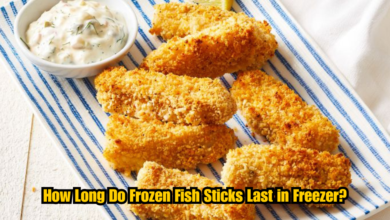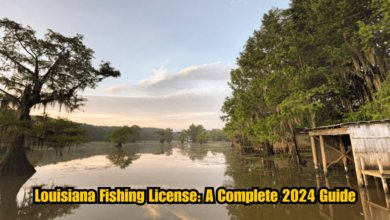A Comprehensive Guide to BVI Ballyhoo Fishing: Tips, Techniques, and Best Practices

Fishing in the British Virgin Islands (BVI) is a dream for many anglers, and one of the most exciting techniques for catching prized game fish is Ballyhoo fishing. The pristine waters of the BVI offer unparalleled opportunities for seasoned anglers and beginners alike to target some of the ocean’s most coveted species, such as marlin, sailfish, tuna, and mahi-mahi, using Ballyhoo as bait.
In this guide, we will dive deep into the world of Ballyhoo fishing in the BVI, covering everything from choosing the right gear to mastering the rigging techniques, and even the best locations to drop your lines for a successful fishing expedition. Whether you’re a novice or a pro, this article will provide you with detailed, actionable insights to ensure your next fishing trip is a success.
What is Ballyhoo Fishing?
Ballyhoo is a type of baitfish that is highly effective for catching large predatory fish. Known for its sleek body and ability to skip across the water’s surface, Ballyhoo is often used as both a live bait and dead bait. Its natural movement and appearance make it irresistible to species like sailfish and tuna.
In the BVI, Ballyhoo fishing refers to the use of Ballyhoo as the primary bait for targeting pelagic species. These fish are typically found in offshore waters, making them a favorite among deep-sea fishing enthusiasts.
Why Choose the British Virgin Islands for Ballyhoo Fishing?
The British Virgin Islands are renowned for their crystal-clear waters, abundant marine life, and year-round fishing opportunities. The combination of favorable currents, reefs, and deep-sea trenches creates the perfect environment for large game fish. Moreover, the warm Caribbean climate allows for Ballyhoo fishing throughout the year, with certain months yielding particularly high catches.
Optimal Fishing Seasons
Although fishing in the BVI is possible year-round, some seasons are more fruitful than others. The prime fishing months for marlin, sailfish, and tuna tend to be between April and September. During this period, the fish are more active and can be found in greater numbers, making it the best time for Ballyhoo fishing.
Essential Gear for BVI Ballyhoo Fishing
The key to a successful fishing trip lies not only in your technique but also in having the right gear. Below are the essential items you need for a productive day of Ballyhoo fishing in the BVI.
Fishing Rods and Reels
When targeting large fish like sailfish and marlin, you need a heavy-duty rod and reel combo capable of handling the power of these pelagic species. Choose a rod with a fast action tip to ensure quick hook sets, and pair it with a high-capacity reel that can hold several hundred yards of line. Look for reels with smooth drag systems as these are crucial when battling large fish.
Fishing Lines and Leaders
For Ballyhoo fishing, we recommend using monofilament lines in the 30-50 lb test range. Monofilament is ideal because of its stretch, which provides added protection against sudden jerks and runs. Additionally, always attach a fluorocarbon leader of 80-100 lbs to reduce the chances of your line being cut by a fish’s sharp teeth.
Hooks
The size and type of hook you use will depend on whether you’re fishing with live or dead Ballyhoo. For live bait, opt for circle hooks in the 6/0 to 9/0 range. These hooks improve your catch-and-release success rate by ensuring the fish is hooked in the corner of its mouth. If you’re fishing with dead bait, J-hooks or O’Shaughnessy hooks are preferable.
Rigging Ballyhoo for Success
Properly rigging your Ballyhoo is crucial for attracting predatory fish. Whether you’re trolling or drifting, the presentation of your bait will significantly impact your chances of a strike.
Live Bait Rigging
When rigging a live Ballyhoo, it’s essential to keep the baitfish alive and active for as long as possible. Insert the hook just behind the dorsal fin or through the nostrils to minimize damage to the fish. This technique allows the Ballyhoo to swim naturally, increasing its chances of attracting large game fish.
Dead Bait Rigging
For dead Ballyhoo, there are several rigging methods, but one of the most popular is the “split-bill” rig. This involves splitting the bill of the Ballyhoo and securing it to the hook using rigging wire. This method ensures that the bait swims straight and natural, mimicking live prey even in rough waters. Additionally, adding a chugger head or skirt over the Ballyhoo can further enhance its appeal by creating bubbles and extra movement in the water.
Best Techniques for Ballyhoo Fishing in the BVI
Mastering the right techniques is key to success when Ballyhoo fishing in the British Virgin Islands. Two of the most effective methods are trolling and drifting.
Trolling
Trolling is a popular technique in the BVI, especially for targeting large pelagic species like marlin, sailfish, and mahi-mahi. Trolling involves dragging the Ballyhoo behind a boat at a controlled speed to mimic the movement of a live fish. Use a combination of surface and deep-water lures to cover a range of depths and increase your chances of a strike. When trolling, ensure your bait swims naturally without spinning or twisting, as predators can quickly detect unnatural movements.
Trolling Speed
The ideal trolling speed for Ballyhoo fishing is between 5 and 8 knots. This speed keeps the bait moving naturally while giving the fish enough time to strike. For sailfish and marlin, stick to the lower end of the speed range, whereas faster species like wahoo may require speeds closer to 8 knots.
Drifting
Another highly effective method for Ballyhoo fishing in the BVI is drifting. This technique is particularly useful when fishing in areas with strong currents, as it allows your bait to move naturally with the water. When drifting, rig your Ballyhoo with a weighted hook to keep it just below the surface, where most game fish are actively hunting.
Top Fishing Locations in the British Virgin Islands
The BVI offers an abundance of fishing spots for Ballyhoo fishing, each with its own unique advantages. Below are some of the top locations where you’re likely to have the most success.
North Drop
The North Drop is one of the most famous fishing spots in the BVI, known for its deep waters and abundant marine life. This area is particularly famous for blue marlin fishing, but you can also catch other species like yellowfin tuna and wahoo here. The steep underwater drop-off provides ideal conditions for trolling Ballyhoo.
Anegada Reef
If you’re looking for a more shallow-water fishing experience, head to Anegada Reef. This area is rich in snapper, grouper, and tarpon, making it an excellent location for both trolling and bottom fishing with Ballyhoo. The reef’s structure provides ample opportunities to target reef fish using Ballyhoo as bait.
Virgin Gorda
The waters around Virgin Gorda are another prime fishing spot, especially for targeting mahi-mahi and wahoo. The combination of reefs, sandy bottoms, and deep-water channels creates the perfect environment for a variety of game fish. Drifting Ballyhoo along these underwater structures can yield impressive results.
Ballyhoo Preservation: How to Store and Handle Your Bait
Whether you’re fishing with live or dead Ballyhoo, proper storage and handling are critical to maintaining the effectiveness of your bait. Ballyhoo is a delicate baitfish, and mishandling can lead to poor performance in the water.
Storing Live Ballyhoo
For live Ballyhoo, it’s essential to keep them in an aerated live well with circulating seawater to mimic their natural environment. Avoid overcrowding the tank, as too many fish in one space can cause stress and premature death. Additionally, regularly check the water temperature, as Ballyhoo are sensitive to sudden changes in temperature.
Storing Dead Ballyhoo
If you’re using dead Ballyhoo, freezing is the best way to preserve them. Place the fish in vacuum-sealed bags to minimize freezer burn, and store them in a cooler with dry ice if you’re planning an extended fishing trip. When you’re ready to use them, thaw the Ballyhoo slowly in a cool and shaded area to maintain the integrity of the bait.
Conservation and Ethical Fishing Practices
While Ballyhoo fishing in the BVI offers thrilling opportunities, it’s important to practice sustainable and ethical fishing. The British Virgin Islands are home to a fragile marine ecosystem, and overfishing or improper fishing techniques can harm the environment.
Catch and Release
One of the best ways to protect fish populations is by practicing catch and release. This technique allows you to enjoy the thrill of the catch while ensuring the fish can live to fight another day. Use circle hooks to reduce injuries, and handle the fish as little as possible to avoid damaging its protective slime coat.
Respecting Local Regulations
Before heading out to fish in the BVI, familiarize yourself with the local fishing regulations. The BVI government enforces strict rules on bag limits, seasonal closures, and protected species, all aimed at maintaining healthy fish populations. Always adhere to these regulations to ensure you’re fishing responsibly.
Conclusion: Elevate Your Fishing Experience with Ballyhoo in the BVI
Ballyhoo fishing in the British Virgin Islands offers anglers the chance to catch some of the ocean’s most sought-after species in a stunning and pristine environment. By mastering the techniques outlined in this guide—whether it’s rigging your bait correctly, trolling at the right speed, or choosing the best fishing spots—you’ll significantly increase your chances of a successful and enjoyable fishing trip.
The key to Ballyhoo fishing lies in the details. Whether you’re a seasoned pro or a beginner, investing in the right gear, honing your rigging skills, and understanding the local waters will set you on the path to success.




